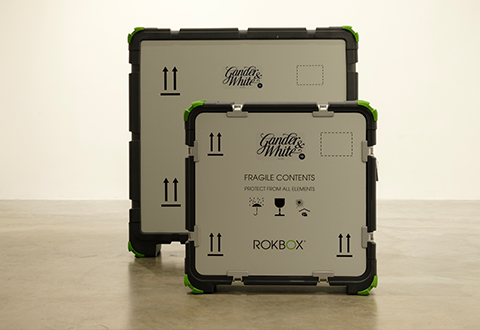Filter

Location
Job Type
Filter

Location
- New York, USA
Categories
- Notice
- Pinned


Wednesday 27th March 2024

For almost a century the fine art shipping company Gander & White has worked with collectors, museums, auction houses, and galleries to transport artworks across the world. Now, ninety years on, the shipper is turning its attention to its role in the climate crisis.
Along with partners across the industry, the team at Gander & White are trying to understand how to reduce the environmental impact of shipping, which plays such a fundamental role in the sector.
“If you can’t move collections around, there’s no culture,” says Alexander Bradford, Global Business Development & Sustainability Manager at Gander & White.
But, as GCC’s (Gallery Climate Coalition) own Sustainable Shipping Campaign has shown, transportation of artworks, goods and materials, particularly via air freight, is a major source of greenhouse gas emissions in the art sector.
At the same time, the packaging used in the process often relies on large volumes of single-use plastic and results in a significant amount of waste.
Bradford explains that, in 2021, Gander & White began to collect data on their emissions as part of a shift towards making sustainability “integral” to their ways of working.
The data helped them to understand where they were having the biggest impacts. The team identified emissions from trucks, energy used to maintain climate and temperature controls in their facilities, packing materials, and international travel as some of their main sources of emissions.
“The biggest part of our carbon footprint comes from our electricity and our diesel,” says Bradford.
To get started on reducing these impacts, Gander & White joined GCC and worked with environmental consultants Planet Mark to begin to measure their emissions.
Gander & White are Active Members of GCC and became the first and only asset-based fine art shipper to achieve this status in 2023.
This year the shipper aims to use all of the data they’ve gathered to set specific reduction goals, and will be measuring Scope 3 for the first time.
“We’d like to be able to position ourselves slightly ahead of climate targets,” says Bradford.
Over the past three years the team has already begun to make changes to reduce its footprint.
The shipper’s European facilities have now gathered three years’ worth of data on carbon emissions, and the US facilities submitted data for the first time in 2023.
A Green Team, made up of staff from the London and Paris facilities and representatives from each of the US offices, is up and running, and has been focusing on issues including packaging, energy use, and reducing vehicle emissions.
Please read the Sustainable Shipping Campaign full article here!